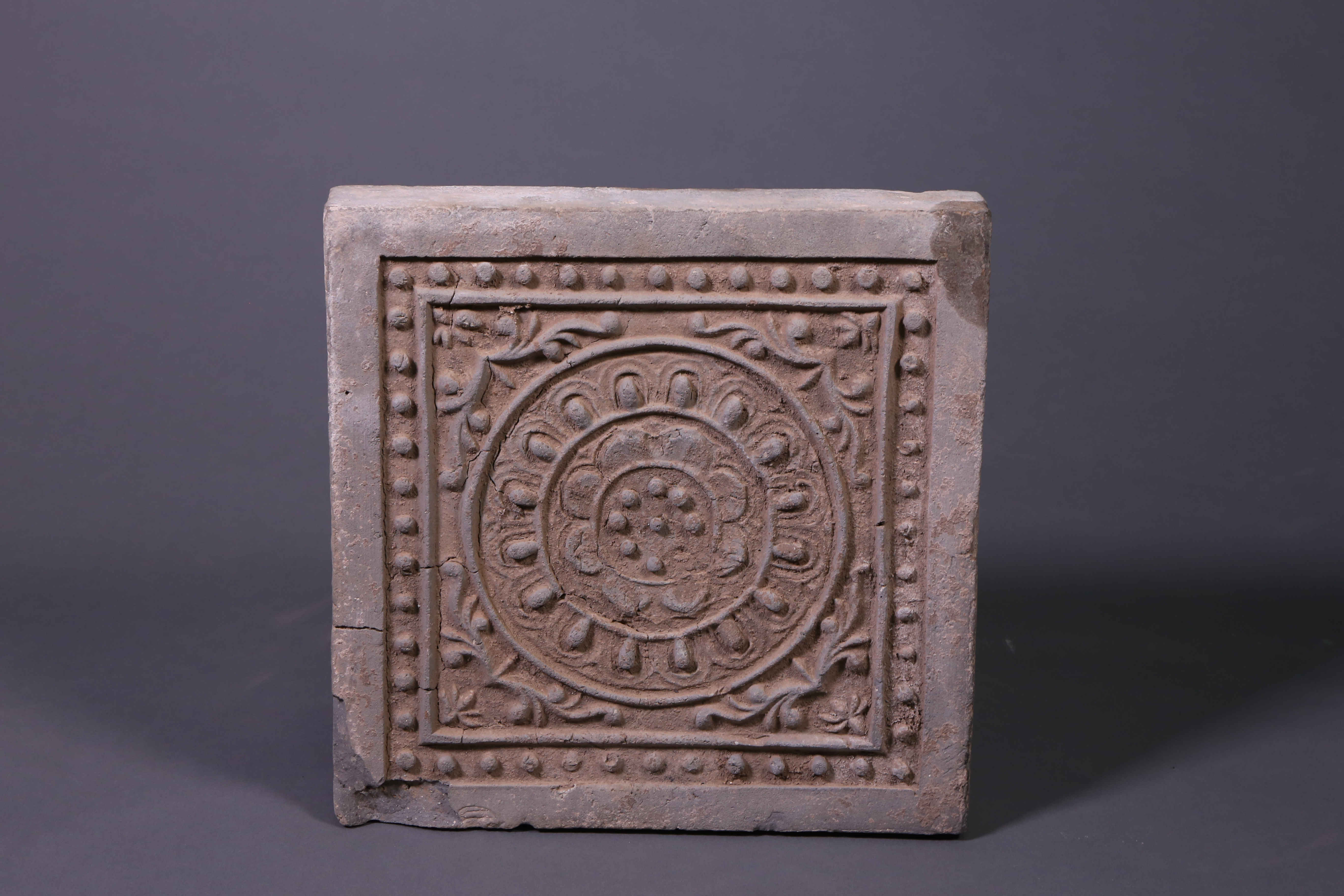Date: Tang Dynasty (618-907)
Provenance: Unearthed from eastern capital city ruins of the Sui and Tang dynasties (589-907), Luoyang, Henan province
Measurements: Length: 32.8 cm, Thickness: 7 cm
The brick is almost square in shape and features a wide border, with the central part showcasing a lotus seedpod containing nine seeds. The outer design comprises two circles of lotus patterns; the inner circle displays the flower with eight single petals; and the outer circle consists of a lotus with eight pairs of multi-petals. Surrounding the lotus pattern is the tendril pattern, and the outermost part is adorned with a bead pattern.
During the Tang Dynasty, the lotus pattern held a significant position, evolving through different phases. In the early Tang, it inherited characteristics from previous periods. In the high Tang, various exquisite lotus patterns emerged, and in the late Tang, there was a decline in the use of the lotus pattern.
The lotus pattern is clearly influenced by Buddhist culture. Buddhism entered China during the Eastern Han Dynasty (25-220) and rapidly developed during the Wei and Jin dynasties (280-420). Along with it, various elements of Indian Buddhist art were absorbed into the Central Plain's culture and applied to daily life.
As decorative elements on architectural materials like bricks and tiles, the lotus pattern reflects the influence of the lotus imagery in Indian Buddhist art. Traditional lotus patterns were mainly stylized with four or eight petals, while Buddhist lotus flower patterns were lively and diverse. During the Tang Dynasty, lotus-style patterns reached their peak and were extensively used in decorating tiles and bricks, combining Chinese elements. This resulted in a rich variety of lotus patterns, unprecedented in beauty and clearly influenced by Buddhism.

